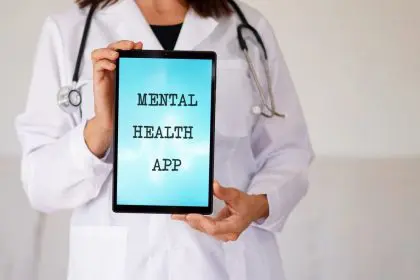In today’s hyperconnected world, a peculiar phenomenon called “popcorn brain” has emerged, affecting millions of people who find themselves unable to focus on simple tasks. First identified by researcher David Levy in 2011, this condition mirrors the chaotic movement of popping kernels, reflecting our increasingly scattered thoughts in the digital age.
The impact of this modern attention crisis extends far beyond mere distraction, fundamentally altering how we work, communicate and process information. As our reliance on digital devices grows, understanding and managing popcorn brain becomes increasingly crucial for maintaining productivity and mental well-being.
8 telltale signs you’re suffering from popcorn brain
- Your mind races between multiple thoughts while trying to complete simple tasks, making even basic work assignments feel overwhelming and impossible to finish. This constant mental juggling creates a sense of perpetual motion without progress, leaving you exhausted yet unaccomplished at day’s end.
- Conversations become increasingly difficult to follow as your attention drifts to incoming notifications or the urge to check your phone. You might find yourself nodding along while completely missing what others are saying, damaging both professional and personal relationships.
- Work projects that once took an hour now stretch into several as you bounce between tabs and applications. The constant switching creates an illusion of productivity while actually reducing your efficiency and quality of work.
- Reading longer articles or books becomes a struggle as your brain craves the quick dopamine hits of social media scrolling. This diminished attention span affects not only leisure reading but also crucial work-related documents and communications.
- Decision-making becomes more challenging as your mind continuously seeks new stimulation rather than focusing on the choice at hand. Even simple decisions like choosing lunch options can become overwhelming amid the constant mental noise.
- Physical symptoms like headaches and eye strain increase due to constant screen switching. The rapid visual adjustments and mental shifts create genuine physical discomfort that can persist throughout the day.
- Sleep quality deteriorates as your brain struggles to wind down from constant stimulation. The endless mental activity makes it difficult to achieve restful sleep, creating a cycle of fatigue and reduced focus.
- Anxiety levels rise when separated from digital devices, even for short periods. This dependency can create genuine distress during meetings, meals or other situations where phone use isn’t appropriate.
Understanding the science behind the scatter
Clinical psychologist Leslie Daly explains that our brains have adapted to constant media consumption, fundamentally altering how we process information. The reward system becomes rewired to expect frequent doses of digital stimulation, making sustained attention increasingly difficult.
This neurological adaptation occurs gradually but persistently, creating new neural pathways that favor quick, surface-level processing over deep focus and analysis. The brain’s plasticity, while normally beneficial for learning and adaptation, works against us in this scenario by optimizing for distraction rather than concentration.
The crucial difference from ADHD
While popcorn brain shares some symptoms with ADHD, understanding the distinction proves vital. ADHD represents a chronic neurological condition requiring medical intervention, while popcorn brain stems from environmental factors and lifestyle choices. This difference affects treatment approaches and management strategies.
Medical professionals emphasize that popcorn brain, unlike ADHD, can often be addressed through behavioral changes and environmental modifications. However, persistent symptoms should be evaluated by healthcare providers to ensure accurate diagnosis and appropriate treatment.
Breaking free from the digital trap
Managing popcorn brain requires a multi-faceted approach that addresses both immediate symptoms and long-term prevention. Experts recommend starting with simple changes that can create significant improvements in focus and productivity.
The key lies in understanding that recovery from popcorn brain isn’t about completely eliminating digital technology, but rather establishing healthier relationships with our devices and creating sustainable practices for the modern world.
The power of chunking
Breaking larger tasks into smaller, manageable pieces helps overcome the overwhelming sensation that triggers digital distraction. This technique, known as chunking, allows your brain to focus on achievable goals rather than becoming overwhelmed by larger projects.
Productivity experts recommend creating clear, specific subtasks that can be completed in 25-30 minute intervals, aligning with natural attention spans and providing regular opportunities for productive breaks.
Regaining control through mindfulness
Incorporating mindfulness practices into daily routines can help regulate the nervous system and improve attention span. Simple techniques like focused breathing or brief meditation sessions can create powerful shifts in concentration abilities.
Regular mindfulness practice helps strengthen the brain’s ability to maintain focus and resist distraction. Even short sessions of 5-10 minutes can begin to counter the scattered thinking patterns associated with popcorn brain.
Creating digital boundaries
Implementing structured screen breaks throughout the day helps reset attention patterns. Setting specific times for checking emails and social media prevents the constant interruption cycle that feeds popcorn brain.
Experts recommend establishing “tech-free zones” both in physical spaces and time periods, allowing your brain regular opportunities to practice sustained attention without digital interference.
The role of physical activity
Regular exercise and movement breaks help combat the mental fatigue associated with popcorn brain. Physical activity provides a natural way to regulate dopamine levels without relying on digital stimulation.
Movement also helps reset attention patterns and reduce the physical tension that often accompanies prolonged screen use. Simple activities like walking meetings or stretch breaks can make significant differences in focus and productivity.
Building better work habits
Establishing designated work spaces and times can help train your brain to focus during specific periods. This structure creates mental cues that support sustained attention and productive work sessions.
Creating clear boundaries between work and personal time becomes especially crucial when managing popcorn brain, as the condition often thrives in environments where these lines blur.
Recognizing warning signs
Understanding when popcorn brain transitions from a minor inconvenience to a serious problem requires awareness of key indicators. Persistent physical symptoms or significant impacts on work performance signal the need for professional intervention.
Regular self-assessment helps identify patterns and triggers that contribute to scattered thinking, allowing for more effective management strategies.
The importance of social connection
Maintaining real-world relationships and engaging in face-to-face conversations helps counteract the isolation that often accompanies excessive digital consumption. These interactions provide natural opportunities to practice sustained attention.
Social connections also offer support systems for managing popcorn brain, creating accountability and encouragement for maintaining healthier digital habits.
Looking toward the future
As technology continues to evolve, developing healthy digital habits becomes increasingly crucial. Understanding and managing popcorn brain represents an essential skill for maintaining productivity and mental well-being in the modern world.
The goal isn’t to reject technology entirely but to create sustainable practices that allow us to harness its benefits while protecting our cognitive health and attention capabilities.













